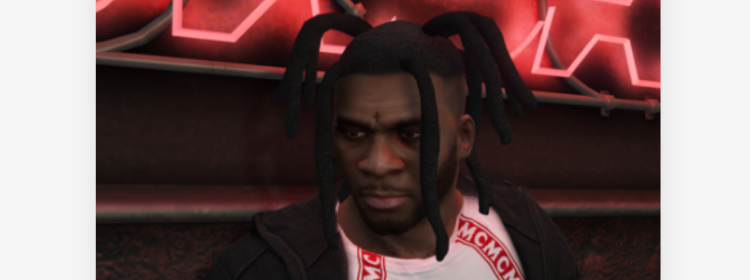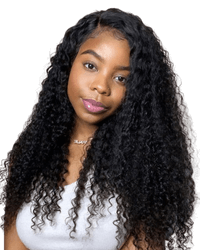We’re mostly accustomed to the idea that dreadlocks are a singular hairstyle. If not for the natural interlocking dreads or the synthetic types, we’re out of dreadlock hairstyle forms.
But here’s one more dreadlock trend creeping back into the fashion arena. The Florida dreads were the raging fad in the ’90s, and they’re hitting the floor again in this decade.
You may feel inclined to be familiar with them and acknowledge everything about them. More so, see how you can get them and rock the fashion trend.
This article discloses all the particulars of the Florida-rooted dread hairstyle.
Let’s get the ball rolling.
What Really are Florida Dreads?
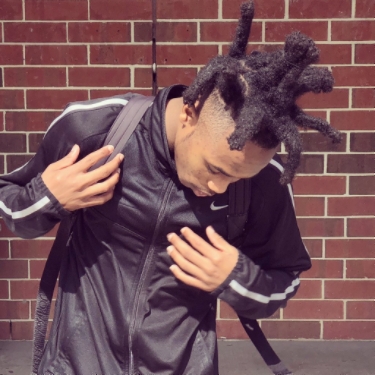
Florida dreads are super thick, spiked-up dreadlocks that resemble the wicks of a candle. From their wick-like outlook, others refer to them as wick locs.
The dread strands usually stand stiffly pointy and do not take the gravity direction. However long Florida dreads hang down, though uncommon.
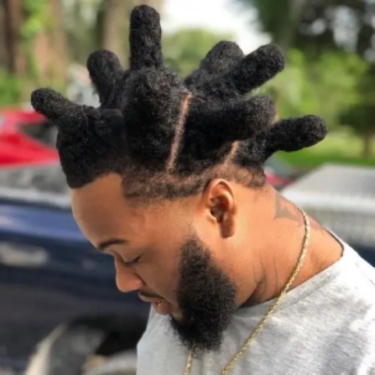
Other dreadlock hairstyles are soft and fall over on the sides, but most Florida dreads prove to be otherwise. With this hairstyle, the shafts are uniformly cylindrical shaped, while the ends are smoothly round.
They’re the thickest form of dreadlocks you can achieve. So, you find that the locs are normally few in number.
You may have around 4- 10 hairpieces covering your entire head. For this reason, they also get the names “bonks” or “globs” because of their extremely dense nature.
How Florida Dreads Came into Existence
Word has been around for ages that Florida dreads first showed up in South Florida, USA. No wonder they possess the name Florida dreads based on their supposed origin.
However, the hairstyle was popularized by Florida rappers, becoming a trait in hip-hop culture. The likes of Kodak Black and SpotemGottem have aced their music videos in the wick dreadlocks, publicizing them.
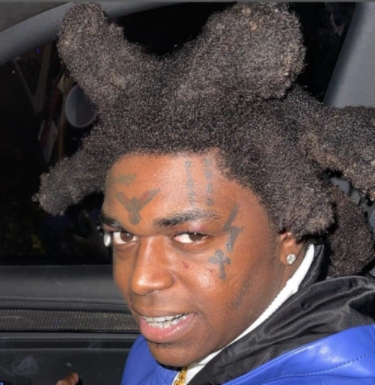
That’s why Florida dreads are associated with the hip-hop genre. Whenever one sees the hairstyle, what comes to their mind is the person’s affiliation with rap and hip hop.
Well, the globs have been prevalent among African Americans. That includes the Afro-Haitian and Afro-Caribbean people who have often been seen wearing the Florida dreads.
The Benefits of Florida Dreads
If you decide to embrace the Florida dreads hairstyle, what good do you get from them? Florida dreads have benefits that apply to both your overall countenance and hair’s health. Check them out.
Protective Hairstyle
This is the greatest upside that your hair generously gains from Florida dreads. The hairstyle is a means to free your hair from unwanted hair damage.
You needn’t style them often and manipulate them into a more sophisticated hairstyle. They are already a hairstyle on their own. The less frequent the manipulation, the more your hair is protected from tugging and breakage.
This helps to retain the hair length, and under good moisturization and care, the hair grows fast. Also, the wick extensions tuck the hair away, shielding the hair from drying and damaging environmental factors. In extreme humid and cold conditions, your hair continues to thrive.
Can be Styled
The fact that the wick locs are already a hairstyle doesn’t mean you cannot try out other hairstyles on them. Florida dreads have the versatility of styling with various styling options.
You can have them in different sizes, colors, and lengths with the help of wick extensions. Or engage yourself in suave Florida dreads hairstyle ideas like pineapple updos, a high ponytail, or side tapered cuts.
DIY Care and Maintenance
Installation may require involving a loctician. But ordinary care and maintenance don’t necessarily need expert assistance except for touch-ups. Most of the activities are effortlessly doable on your own.
With your care kit intact, you’ll just save yourself from loctician costs. The style becomes easy on the wallet, so you keep some bucks for other inevitable expenditures.
Low Maintenance
Being that you don’t have to style Florida dreads, you’re always set for a go. Wake up in the morning knowing that you’ll only unwrap your scarf or remove your satin bonnet and get yourself to work.
You will oil and moisturize when need be, maybe one or two mornings a week.
How to Get Your Own Florida Dreads
First, you may have questions revolving around how to get Florida dreads. Is your hair length suitable for the dread style? Is the installation going to take too long?
Shedding light on these crucial concerns, you will need 6 inches or more length of hair to have nice wick locs. In fact, 6 inches is the best length for real wick locs. But short hair can still have wick locs by adding extension pieces.
Nonetheless, wick locs can be installed in long hair, but it will consume a lot of time. The longer the wicks, the longer the installation time. The duration also will depend on the method of installation, the working speed of the loctician, and your hair texture.
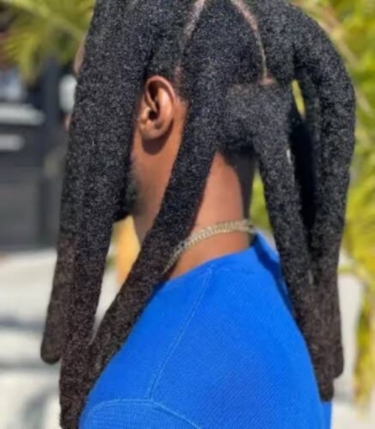
So, have a serious conversation with your loc stylist before proceeding with installation. Be aware of the nitty gritties and leave no loopholes to avert disappointments. Then, make sure your hair is clean and sufficiently moisturized prior to installation.
Methods of Installing Florida Dreads
Florida dreads can be installed using one of the following three methods:
- Freeform method
- Combining existing locs by the rubber band method or crotcheting method
- Crotcheting Florida dread/wick extensions
Each method is discussed in detail to make your selection easier after identifying the most appropriate method.
Freeform Method
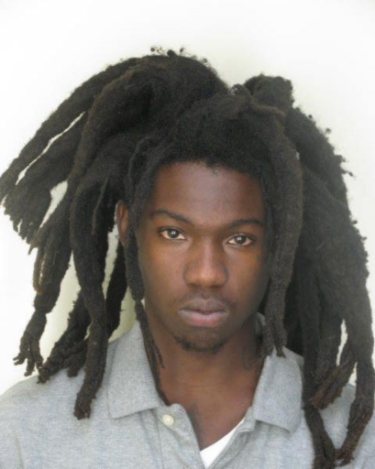
This freeform technique is the most natural way of getting Florida dreadlocks. Your hair type should be able to readily lock itself. This method favors mostly afro-textured hair, precisely the type 4 hair texture.
So, if your hair is kinky or tightly curled, you could go with this method. But the locs will not be as neat and crisp as the wick locs from the crotchet method.
Growing your wick locs freeform will need starter locs to set the pace. You section large parts and comb coil or palm roll or choose to start with two-strand starter locs. From there, you let the hair interlock itself as it grows longer over time.
You’ll just be separating the locs at the roots in case they intertwine. You will barely be manipulating your hair, but you’ll be cleaning and oiling the locs as required. And palm-roll them to maintain their shaft’s shape.
Combine Method
Going with the combine method will have you choosing whether to do rubber bands or crotchet combine your locs. In this method, you must have a natural dreadlock hairstyle with new growth all over.
Most people prefer starting with the rubberband method and then later indulging in crocheting.
1. Rubberband Method
The rubberband method is a creative approach towards creating the wick locs. It holds bundles of locs together to catalyze the interlocking into Florida locs.
Items Needed
- A pack of rubberbands matching hair color
- Rat tail comb
- Locking gel
Rubberband Procedure
Step 1: Define the partings using the rat tail comb, as the root section may be messy due to new growth
Step 2: From the back, take 4 to 5 loc strands and hold them together with a rubberband close to the roots. Ensure the groupings are large to actualize the thickness of wick locs.
Step 3: Fix more rubber bands along the group’s strand, spacing them closely for a tighter grip. The number of rubber bands to use depends on the length of the locs.
Step 4: Seal the ends with another rubber band. And repeat the procedure on other groupings.
After the entire installation of the rubberbands, you’ll let them stay for 3-4 weeks. If the locs wouldn’t have interlocked by the end of that duration, re-wrap the rubberbands around the locs at the original placement regions. Then, wait for another month before removing them again.
2. Crochet Combine Method
Crotcheting is the most common method of achieving wick locs in existing dreadlocks. It’s also the technique when transforming your natural hair directly into the wick locs.
Unlike the rubberband method, you will not wait for a certain period of time for the wicks to form. You achieve them straightaway.
Items Needed
- Double-prong or triple-prong crotchet hook
- Rat tail comb for sectioning
Crotchet Combine Procedure
Step 1: Begin by grouping the locs using one rubberband at the root section. Then, define the parting around the grouping using the rat tail comb.
Step 2: After creating groups for the wick locs, take your crotchet hook and start crocheting from the roots.
Step 3: Insert the hook close to the root at the center of the locs, pick a few hair strands, and pull them into and through the locs. As you do that, the loc should be in between your thumb and the other fingers, with the thumb gripping the loc at the top.
Step 4: Keep interlocking with the crochet hook until your wick loc is well-defined into a cylindrical shape with a round base.
Step 5: Repeat steps 1-4 on the other loc groupings
TIP: When transforming your dread-free natural hair directly into wick locs, the loc grouping is irrelevant. Just jump straight into parting the hair with the rat tail comb and crotcheting the hair sections into wick locs, as shown in the video below.
Crotcheting Wick Extensions
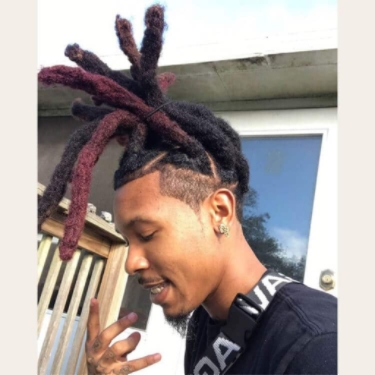
Now, if you don’t want wicks directly in your natural hair or you desire long wicks, think of wick extensions. This is the perfect way to start off your wick-wearing adventure. And if you have short wick locs, get to lengthen them instantly.
Before the installation, choose the most suitable wick extensions. Wick extensions come in various colors, lengths, and sizes. So ensure your choice blends well with your natural hair and the length fits your desires.

Items Needed
- Human hair or synthetic wick extension bundles
- Dreadlock crotchet hook
- Rat tail comb
- Locking gel
Crotcheting the Wick Extensions Procedure
Step 1: Part your hair into large sections and place rubberbands at the roots of every section. The size of the sections should complement the size of the wick extensions. The section size should be slightly larger than the wick sections; otherwise, confirm with your loctician.
Step 2: Take the first wick extension and comb the ends using the rat tail comb. This prepares the wick loc for attachment.
Step 3: Wrap the outer loose ends of the wick loc around your natural hair in the first section to sandwich the natural hair.
Step 4: Start to fuse them by interlocking them with the crochet hook. Go all around the loc to ensure all the hair intertwines and the wick extension is tightly fused to your hair.
Step 5: Repeat the steps 2 – 4 in the other sections.
Florida Dreads Care Tips
While continuing to wear your Florida dreads, you have to keep them in check. They also require to be pampered to maintain their appearance and robustness. These are our care tips we urge you to always put them into practice.
Regular Washing
Wash your Florida dreads regularly with a clarifying shampoo and follow up with a moisturizing conditioner. We recommend washing them at least 1-2 times a month or whenever the wick locs feel dirty.
Thorough Drying
After washing them, dry them completely, ensuring there’s no trace of moisture left behind. First, use a microfibre towel or any clean cotton clothing to suck out the dripping water.
Air drying is the best option, but for complete dryness, you may blow dry at a cool temperature setting. This prevents mold and mildew growth that may cause scalp illnesses.
Oiling Often
Remember to oil your globs with dreadlock moisturizing oils at least once a week. Oiling maintains their strong, soft, and shiny appeal.
Moisturizing
Once in a while, spray rose water sparingly onto the Florida dread strands to keep them hydrated. Neglecting moisturization makes your hair dry and brittle and may eventually break.
Retightening Occasionally
When you notice excessive new growth, consider retightening the wick locs. Book an appointment with your loctician for the retightening process after a few months. It could even be once a year, depending on whether messy looks good on you.
The loctician you book should be the same person who installed them for you. They know the parting patterns and how best to refresh the dreadlocks.
Little Product Application
Every product you use on Florida locs needs to be applied in small amounts. Whether it’s the hydrating rose water, the moisturizing oils, or the retightening wax or gel, learn to go in with pinches. Excessive applications of the oils, wax, and gel contribute to buildup while the rose water dampens the locs.
Night cover-up
At night, cover the Florida dreads with a silk or satin bonnet or wrap a hair scarf. This is part of your night protection routine.
Uniform Sizing
For homogeneity and a neat look, ensure the wick locs are uniformly sized. Noe should be bigger and thicker than the other.
Avoid Heat Applications
Never apply hot hair dryers on your Florida locs to prevent heat damage. The excessive heat dries and weakens the interlocked hair, exposing the locs to breakage.
Protection during Adversely Cold Weather/Seasons
When it’s rainy, cold, or Winter, wear a hooded sweater or a close-fitting beanie to protect the locs. It helps keep your Florida dreads healthy and non-frizzy.
Florida Dreads Myths Vs. Facts
Most people believe the Florida dreads are untidy and dirty. They’re barely a sore sight and an absurd hairstyle. The truth is that Florida dreads can be nicely messy or made neat if crocheted properly.
Others think the wicks are drug addicts’ fashion code. This is related to the belief that hip-hop is all about drug use, and we both know the hairstyle is part of hip-hop culture. The fact is anybody, including non-users, can wear the hairstyle, yet they’re drug-free.
You may want to rock the style, but racial affiliations discourage you. You’re Caucasian, and there’s absolutely nothing wrong when you embrace and appreciate the black heritage.
Lastly, do not let the misconception that Florida dreads need no care and maintenance get into you. As few as they are, they equally deserve care to enjoy their long-lasting benefits.
FAQs about Florida Dreads
How much do Florida dreads cost?
To install them, it may cost $100 – $300 on average because it may cost up to $1000 depending on location. Retightening appointments will have you spending $50 – $300 per appointment.
Are wick dreads the same as congos?
Wick dreads are not the same as Congos. Despite that both combine locs, the wick locs combine 4 or more dreadlocks while Congos combine two or more. Wick dreads are way thicker than Congos.
Do Florida dreads damage hair?
Damage is rare unless you’re reckless with your care routine. If you care for them tenderly, they will turn out a protective hairstyle, promoting hair growth.
Can you get your Florida dreads undone?
Yes, you can remove Florida dreads. The complexity of removal depends on the method of installation you used and the longevity of wear. With wick extensions, you’ll comb them out.
But if they were freeform or crocheted, it would be a tedious process, especially if you’ve had the locs for a long time. If the process seems painful, you’ll have to cut them out.
Can you get wicks with dreads?
No doubt you can get wicks if you already have dreadlocks. You will crotchet combine the locs in groups of fours or fives to achieve the wick loc hairstyle.
Do whites wear Florida dreads?
There’s no racial restriction for Florida dreads when it comes to wearing them. Several whites have been spotted wearing Florida dreads. Be keen when on the streets or check over the internet.
After all, Is the Style Worth Wearing?
At this stage, you can now tell whether the style is worth getting it. Moreover, you’re aware of what Florida dreads, how to get them, and how to care for them for satisfactory wear.
The hairstyle sets no limits; every community, culture, race, or religion can give it a try. Go to your nearest loctician to start your wick journey.
Leave a comment below about your Florida dreads experience, whether you’re a stylist or an enthusiast.


